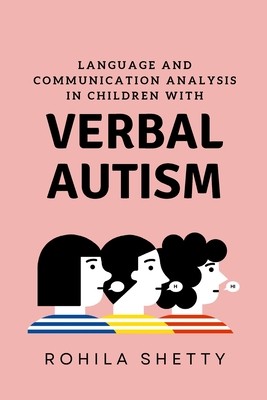
- We will send in 10–14 business days.
- Author: Rohila Shetty
- Publisher: independent Author
- ISBN-10: 872606426X
- ISBN-13: 9788726064261
- Format: 15.2 x 22.9 x 0.9 cm, minkšti viršeliai
- Language: English
- SAVE -10% with code: EXTRA
Language and Communication Analysis in Children with Verbal Autism (e-book) (used book) | bookbook.eu
Reviews
Description
Communication is a key element in defining a human being as a social one. Successful communication is reported to depend on the motivation of the participants to share information, their competence in producing communication acts to achieve specific goals and their ability to recognize and rectify unsuccessful communication attempts Communication develops as a result of early social interaction between an infant and his or her caregiver. With the emergence of language, children develop a variety of non-verbal and verbal means to express a range of communication functions. Language is a learned code or system of rules. It involves five components namely; phonology, morphology, syntax, semantics, and pragmatics. Communication impairment which partially defines autism is closely related to the impairment of social interaction and includes impaired use of language even when language is present. Rapin and Dunn (2003) report that pragmatic impairments remain lifelong whereas the other language difficulties are no longer manifest in every single child when they mature. Pragmatic language disorders (PLDs) are the major defining linguistic characteristics of autism regardless of the function level of the affected individual and in some cases, it may be the only parameter of language that is deficient
- Author: Rohila Shetty
- Publisher: independent Author
- ISBN-10: 872606426X
- ISBN-13: 9788726064261
- Format: 15.2 x 22.9 x 0.9 cm, minkšti viršeliai
- Language: English English
Communication is a key element in defining a human being as a social one. Successful communication is reported to depend on the motivation of the participants to share information, their competence in producing communication acts to achieve specific goals and their ability to recognize and rectify unsuccessful communication attempts Communication develops as a result of early social interaction between an infant and his or her caregiver. With the emergence of language, children develop a variety of non-verbal and verbal means to express a range of communication functions. Language is a learned code or system of rules. It involves five components namely; phonology, morphology, syntax, semantics, and pragmatics. Communication impairment which partially defines autism is closely related to the impairment of social interaction and includes impaired use of language even when language is present. Rapin and Dunn (2003) report that pragmatic impairments remain lifelong whereas the other language difficulties are no longer manifest in every single child when they mature. Pragmatic language disorders (PLDs) are the major defining linguistic characteristics of autism regardless of the function level of the affected individual and in some cases, it may be the only parameter of language that is deficient


Reviews